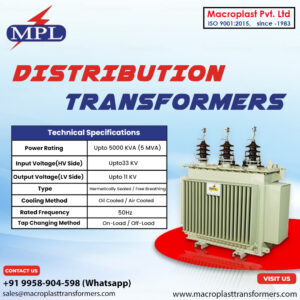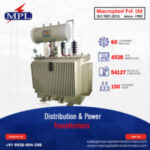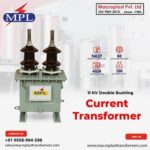Transformers are an essential part of an electrical system, utilized for changing voltage and controlling alternating current during the transmission of electrical energy. All the transformers work on the principle of electromagnetic induction. However, the configuration, design, use & functioning, and applications of the transformers vary. Different transformers are used in the electrical system according to the required applications. Distribution Transformers and Current Transformers are two types of transformers used in the electrical system.
Though, their features, characteristics, voltage capacity, configuration, and applications make the two differ from each other. In this blog, we are sharing the differences between Distribution Transformers and Current Transformers.
Based on Functioning
The Distribution Transformers are used for minimizing the high voltage to a low voltage level, which is suitable for distribution lines. It ensures that the voltage level is reduced to a safe level so that the end user can utilize it.
On the other hand, Current Transformers are utilized for providing the accurate measurement of current flow in electric circuits. Along with the information on current flow, it also helps in detecting any fault in the electric circuit and measuring power flow.
Based on Design
According to the power system needs, the Distribution Transformers are designed as either single-phase transformers or three-phase transformers. It uses winding coils and a magnetic core to transmit electrical energy using electromagnetic induction. For residential use, single-phase transformers are used, whereas, for commercial use, three-phase transformers are used.
The Current Transformers are designed to monitor current and power flow in an electrical system. They use primary winding to induce a proportional current in the secondary winding. A monitoring device is linked with the secondary winding, which then helps measure the current flow. It helps provide accurate results when measuring current flow or any kind of fault in the electrical system.
Based on Capacity
The capacity of the Distribution Transformers is to handle voltage levels starting from 11kV up to 33kV. The electric current handling capacity of distribution transformers is up to 1000 A.
Whereas the current transformers have the capacity to handle the current level higher than the Distribution Transformers. They can handle electric current starting from around 100 A to several 1000 A.
The Distribution Transformers are used in power distribution and voltage monitoring. In comparison, the Current Transformers are used in metering current flow and protecting the electrical equipment from damage. We hope now you know how Distribution Transformers differ from Current Transformers. It will help you in buying a suitable transformer according to your requirement. To buy the best quality distribution or current transformer, go for MACROPLAST. They use high-grade components in their transformers and supply them at the best market prices.



